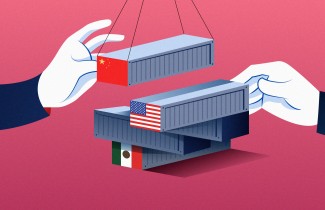The USMCA Will Be a Growth Engine for Mexico
The average growth for Mexico, according to the latest surveys of private sector analysts, indicate an expansion of about 4 percent per year for this year
The economy contracted 8.5 percent in 2020, the worst decline since the Great Depression of the 1930s. The components of aggregate demand for the year as a whole, published by INEGI, have yet to be analyzed, but it is probable that the economy did not contract in double digits thanks to the external sector. In other words, the USMCA is helping to limit the adverse impact of the pandemic on the national economy. In fact, manufacturing exports (the most important in the country) have already recovered their pre-pandemic level.
The above is explained by the trade integration that exists between Mexico and its northern neighbors, especially the United States. The latter is recovering vigorously due to a counter-cyclical economic policy. First, by an ultra-expansionary monetary policy, with a range of the target interest rate from zero to 0.25 percent for a prolonged period of time, and second, by an aggressive fiscal policy of 1.9 trillion dollars that was approved in the congress of that country last week.
Thus, the latest forecasts for US growth They have been revised up and that country is likely to recover its 2019 GDP by the middle of this year. In contrast, the recovery of Mexican GDP is expected to take place only in 2023 or 2024. The dynamism of the US economy this is good news for Mexico. As a consequence, Mexico’s growth forecasts have also been revised upwards. Average growth for Mexico, according to the latest private sector analyst surveys, indicates an expansion of about 4 percent per year for this year.
The problem for the country is medium term. Just as the external sector is good news for national growth, domestic demand is recovering very slowly. Hundreds of thousands of SMEs were lost due to the lack of fiscal support (less than 1 percent of GDP) and with it millions of jobs left. This is contributing to a very slow recovery in private consumption. In addition to this, the iGross fixed investment already tied 22 months in contraction This will reduce the productive capacity of the economy and reduce the growth potential of the country. Recent economic policies such as the federal government’s counter energy reform will only help reduce investment further.
Thus, the latest surveys already suggest that the average de medium-term growth of the country has been reduced to 2 percent per year. Without urgent measures to reactivate domestic demand or investment, we will be tied to the external sector as the only component for growth. Paradoxically, the FREE international MARKET, an ideology that is criticized by this administration, will be the only lever for growth for the country.
Originally published in El Financiero.



